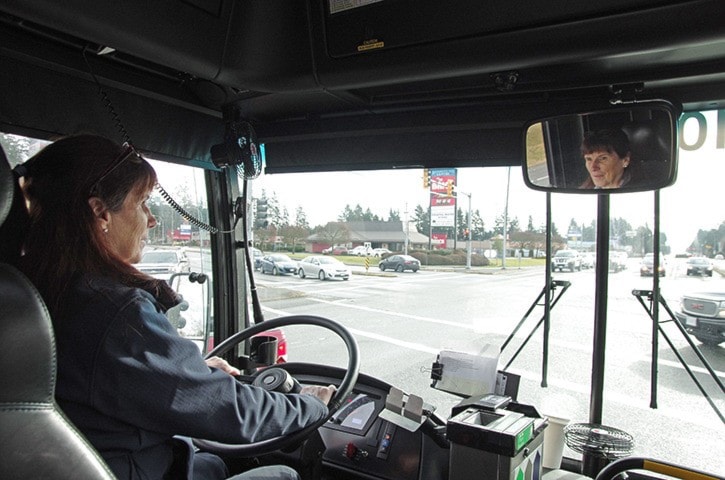Nanaimo's public transit users are now riding on Canada's first fully compressed natural gas-powered bus fleet.
Regional District of Nanaimo Transit announced Thursday it got 24 new model NX40 Xcelsior Flyer compressed natural gas-powered buses. The additional units brings RDN Transit’s fleet to a total of 48 CNG-powered buses that will completely phase out the last of the public transit provider’s diesel-powered units, making Nanaimo the first city in Canada with a fully CNG-powered transit fleet.
The units are quieter, have lower and cleaner exhaust emissions and are cheaper to maintain and operate than their diesel counterparts.
“Replacing the remaining diesel buses with CNG will serve to enhance these benefits in the long run,” said Bill Veenhof, RDN board chairman.
Veenhof said over the past year CNG buses have reduced fleet fuel costs by $300,000 and $100,000 in maintenance. RDN Transit expects to save a total of $800,000 annually operating an entire CNG-powered bus fleet.
Purchases of the CNG buses started in 2015 with 24 buses ordered under a cost-sharing agreement between B.C. Transit, RDN Transit and fuel provider Fortis B.C. B.C. Transit covered 47 per cent of the $643,000 purchase price for each bus and RDN Transit paid $332,000. Fortis B.C. covers 50 per cent or about $20,000 of the $40,000 added production cost for each bus’ CNG fuel system.
The total price for the newest buses in the fleet, which also have security cameras installed for driver and passenger safety, is about $15.4 million.
Some of the savings in operating costs will come from simpler emission control systems, which require less maintenance than their diesel-engine predecessors, but the majority of the buses’ engine parts are otherwise the same, allowing for smaller, less expensive parts inventories.
“There’s a lot of commonality between the parts,” said Aaron Lamb, B.C. Transit vice president of asset management. “If I remember correctly it’s about 85 to 90 per cent of the parts are similar, which is great because from your supply chain and inventory management it’s awesome.”
Those attending the announcement were taken on short ride to demonstrate the quietness and passenger comfort features of the new units.
